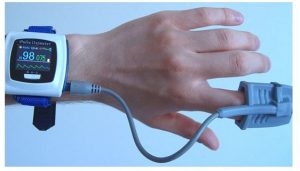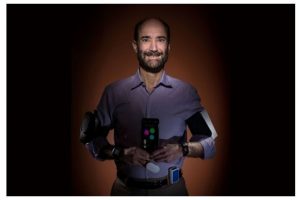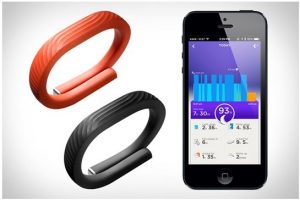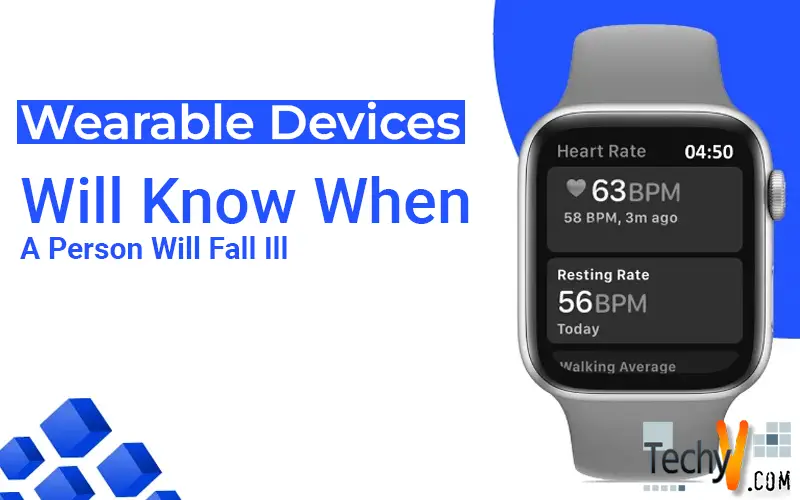Many people have been using wearable devices to keep track of their health. It is assumed that the market for consumer wearables, is likely to reach $34 billion within 2020. But most of the wearable health tracking devices available today, inform the users about things that are easy to measure, like foot steps or heart rate, and the measurements given by such devices are not potent enough to make accurate predictions about one’s health.
So, a research team at Stanford University School of Medicine has come up with a way so that wearable devices which are capable of tracking basic parameters of the human body to provide important health information to the wearer. The wearables invented by the team is capable of informing the user when he or she is going to fall ill.

Michael Snyder, professor and chair of Genetics of the Stanford University of Medicine, and his team are recently working on wearable sensors that will monitor heart rate, skin temperature and other variable parameters of a person, and will inform whether there is any onset of infection, sickness, inflammation or insulin resistance. The study intends to establish a range of baseline values for the user.
If the deviation from the normal range is monitored and associated with environmental factors, illness, and other external conditions that may affect health, it will be possible to understand whether the person will fall ill in the recent future or not. Distinct patterns of deviation from baseline values correlate with certain health problems.
Inception of the research
A research study regarding the wearable sensors that can tell its users when they are most likely to fall ill was published online on 12th January 2017, in PLOS Biology. The study was led by senior author, Michael Snyder; postdoctoral scholars Jessilyn Dunn, Ph.D., Xiao Li, Ph.D., and Denis Salins, a software engineer.

Michael Snyder had once helped his brother for erecting fences in rural Massachusetts when the tick bit him. A few days later while on a flight, heading to Norway, for a family vacation, Snyder realized he had an increased heart rate and a low oxygen level (readings were observed from the eight biosensors he was wearing as a part of the study).
Although during a flight, passengers experience fluctuations in their bodily parameters but Snyder’s readings were deviated from the baseline value and hadn’t returned to normal range, as they should in the case of a normal, healthy individual.
He feared he had Lyme disease – a disease which, if diagnosed late, may hijack the body’s immunity system and destroy healthy brain and nerve tissues. Snyder made no delay in getting himself cured, and further tests confirmed that he indeed was infected by Lyme microorganisms.
This incident impressed Snyder, as the biosensors proved its capability to pick up important information about infections before the symptoms start occurring.
The research study:
The team collected around 2 billion measurements from 60 individuals for their study. The readings and measurements included continuous data from the biosensors worn by each participant, lab tests, gene expressions and several other measures. The participants were asked to wear monitors which collected 250,000 readings per day.
The team also collected data on heart rate, the oxygen level in blood, skin temperature, weight, height; activities like sleeping, walking, running; calories burnt; and also exposure to radiations. And research was performed to find out how much the readings deviated from baseline values, in a person who has been infected or will be falling ill, and deductions were made on what could have been the possible reason for illness.
In some participants, the biosensors showed that people with an elevated level of C-reactive proteins (an immunity system marker) in blood had a higher than usual heart rate and skin temperature.
The wearable sensors even helped to distinguish people with insulin resistance, which is a precursor of Diabetes Type 2. The research team performed a glucose test on 20 participants, of which results were obtained that 12 people were insulin resistant.
An algorithm was designed and tested, which could process the data from few simple inputs (daily steps, the difference between daytime and nighttime heart rate) and can predict which individuals participating in the study are likely to develop insulin resistance.
Future of Wearable biosensors that can predict illness
Normal human beings seldom get their heart rate, and body temperature checked, and if it is normal, the readings are ignored. But Snyder imagines a future where there will be more sensors on a human body than there are in our cars.
People will know about the baseline values of their parameters. With such an approach to the healthcare system, every person will know when the readings are drifting away from the normal range, and by automatic data analysis, they will know about the data that will flag the onset of an infection, inflammation or sickness.

The study is still in an experimental phase, but the research team of the University of Stanford, are determined to design algorithms that will allow smart devices to notify its users whether they will fall ill. The early information will help the users to get the disease diagnosed early, and start treatment for the same.


















